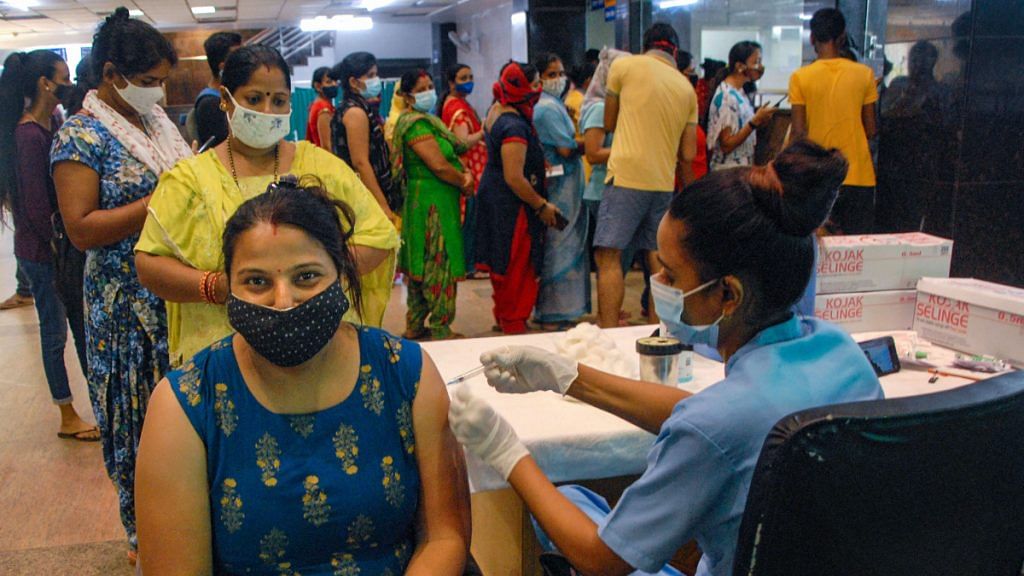New Delhi: Since the beginning of the pandemic, India has contributed to approximately 71 per cent of the worldwide mucormycosis cases in Covid-19 patients. A new study points out the five most probable factors that led to the rise in mucormycosis infections in India.
Mucormycosis (MCR), dubbed ‘black fungus’, is an invasive fungal infection generally caused by a group of opportunistic moulds called mucormycetes.
As of May 2021, India had reported approximately 14,872 cases of mucormycosis with the states of Maharashtra and Gujarat contributing the most number of infections in active and recovered Covid patients.
According to a team of researchers from Post Graduate Institute of Medical Education & Research (PGIMER), Chandigarh, and Leibniz Institute for Tropospheric Research in Germany, while the Indian Council of Medical Research (ICMR) has recently provided some important guidelines related to Covid-associated mucormycosis, there are a few missing points that should be included to protect against the deadly mucormycosis.
The team pointed out the five most probable factors that contribute to Covid associated mucormycosis.
Diabetes mellitus
Simply known as diabetes, it is the most common risk factor linked to an increase in mucormycosis cases in India.
According to the researchers, diabetes mellitus was significantly reported in over 50 per cent of mucormycosis cases in India. In 2019, a study on mucormycosis revealed that 57 per cent of patients had uncontrolled diabetes mellitus.
Steroids
Steroids were widely given during the second wave after clinical trials showed that they reduced mortality in Covid-19 patients on oxygen or who required mechanical respiration.
The team noted that even patients who did not have low blood oxygen or who did not require hospitalisation were frequently given heavy doses of steroids. In many cases, people with black fungus had taken steroids without prescription after their oxygen concentration levels had dropped, they said.
Steroids work by further dampening the immune system. The deadly combination of steroids and failed immune system due to Covid-19 had increased immune defense breach, which in turn made the body more vulnerable to the fungal infection.
Unsanitary conditions
Due to the lack of hospital beds during the second wave, many patients had to use oxygen concentrators in their homes. In most oxygen concentrators, one needs to use distilled water as the moisture source when using a refillable humidifier bottle. If not properly distilled, this water may serve as a potential source for pathogenic organisms such as bacteria and mold.
Apart from that, researchers point out that pipes used for oxygen cylinders could be highly contaminated. The immuno-suppressed patient had a long-term stay in the intensive care unit on these pipes and oxygen cylinders, which could have increased the infection.
Also read: Vaccines cut Covid transmission risk but only 90-day protection against Delta: Oxford study
High levels of iron
A study in 2020 showed that severe Covid-19 patients suffer from a change in iron metabolism. High level of iron in the cells results in the production of reactive oxygen species — highly reactive chemicals formed from oxygen — which in turn causes tissue damage.
In severe Covid cases, cytokines — the toxic proteins of the immune system — further lead to the overloading of intracellular iron.
Such overloading of free iron could be a risk factor for mucormycosis, as shown by a study in 2012.
Poor indoor ventilation
With the lack of proper ventilation, fungal spores present in the air or around the surrounding environment continue to circulate in a room thereby increasing the risk of infection.
A study in 2016 showed that mucormycosis infection broke out from hospital linens. The linens came from a company that operated with poor indoor ventilation, high humidity, and dusty conditions.
(Edited by Paramita Ghosh)
Also read: Modi on Time 100 list for ‘Hindu nationalism, eroding Muslims’ rights, mishandling Covid’
